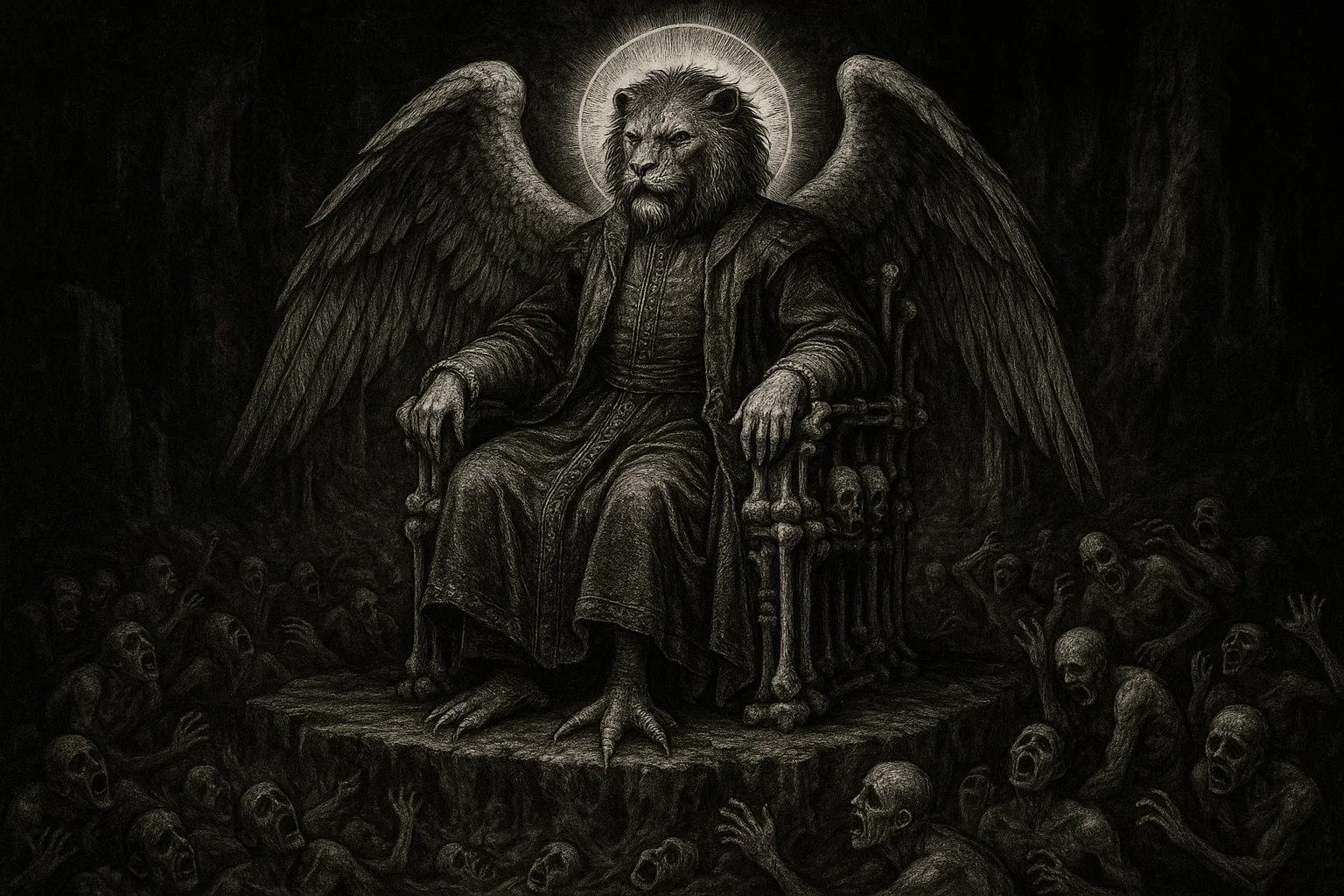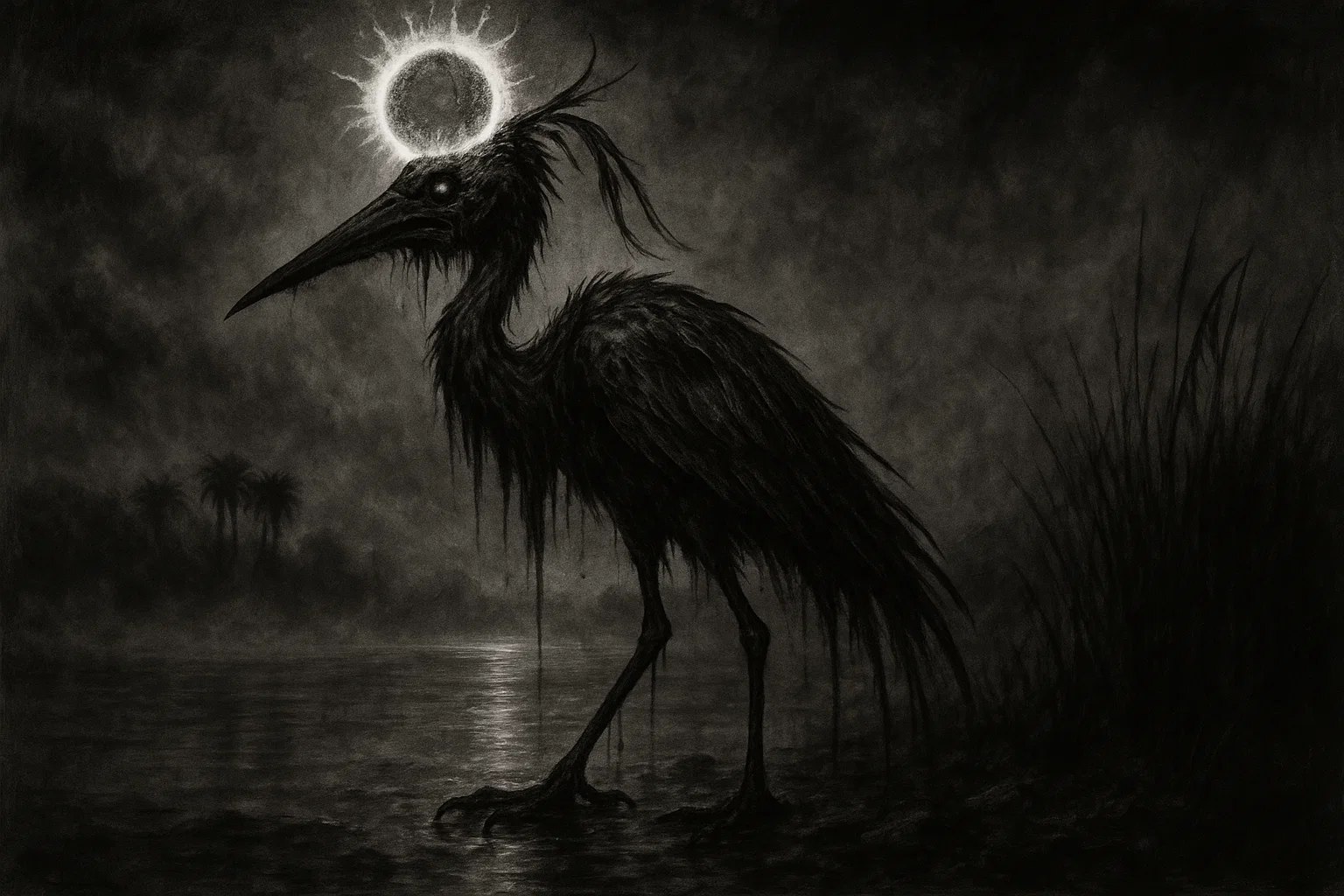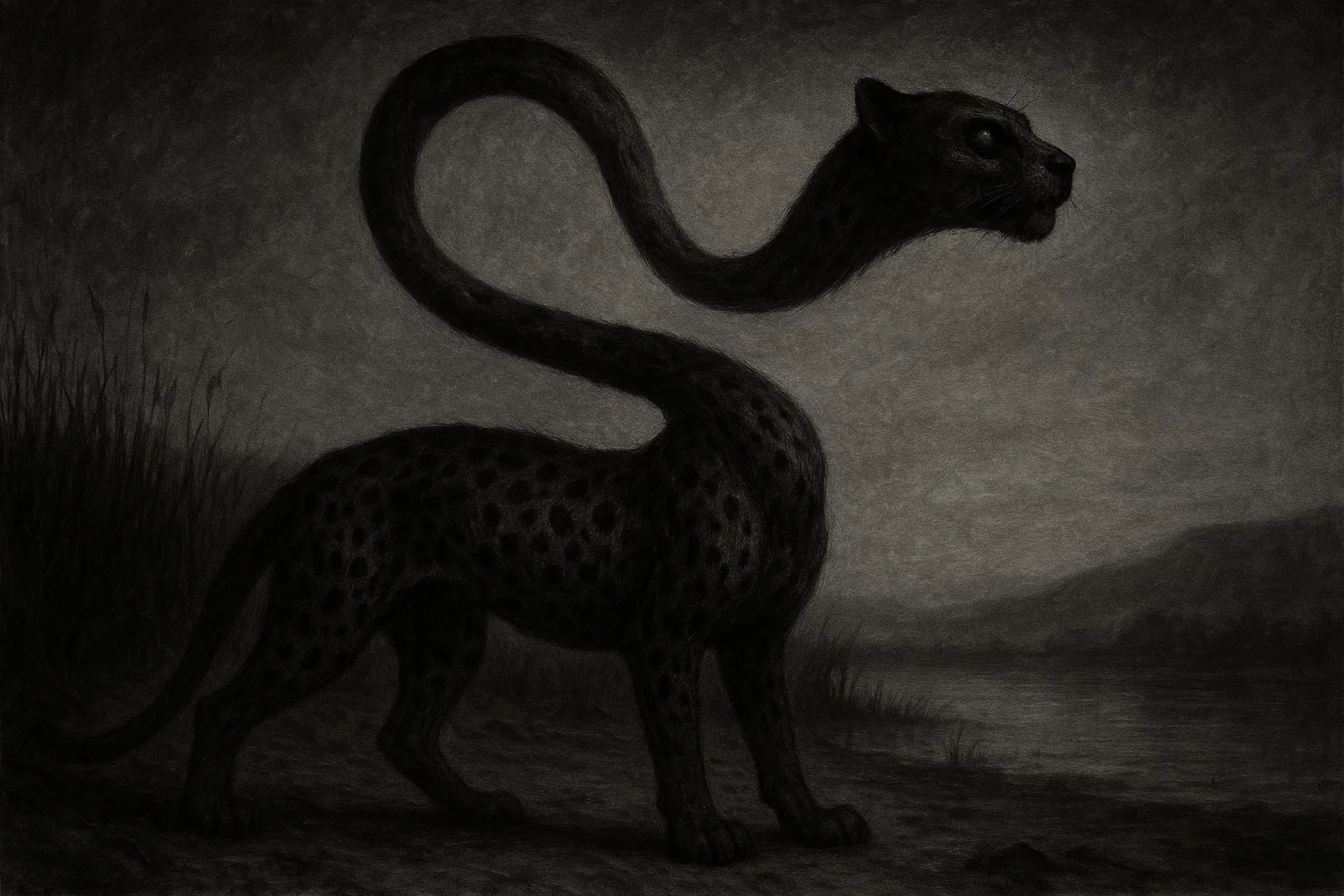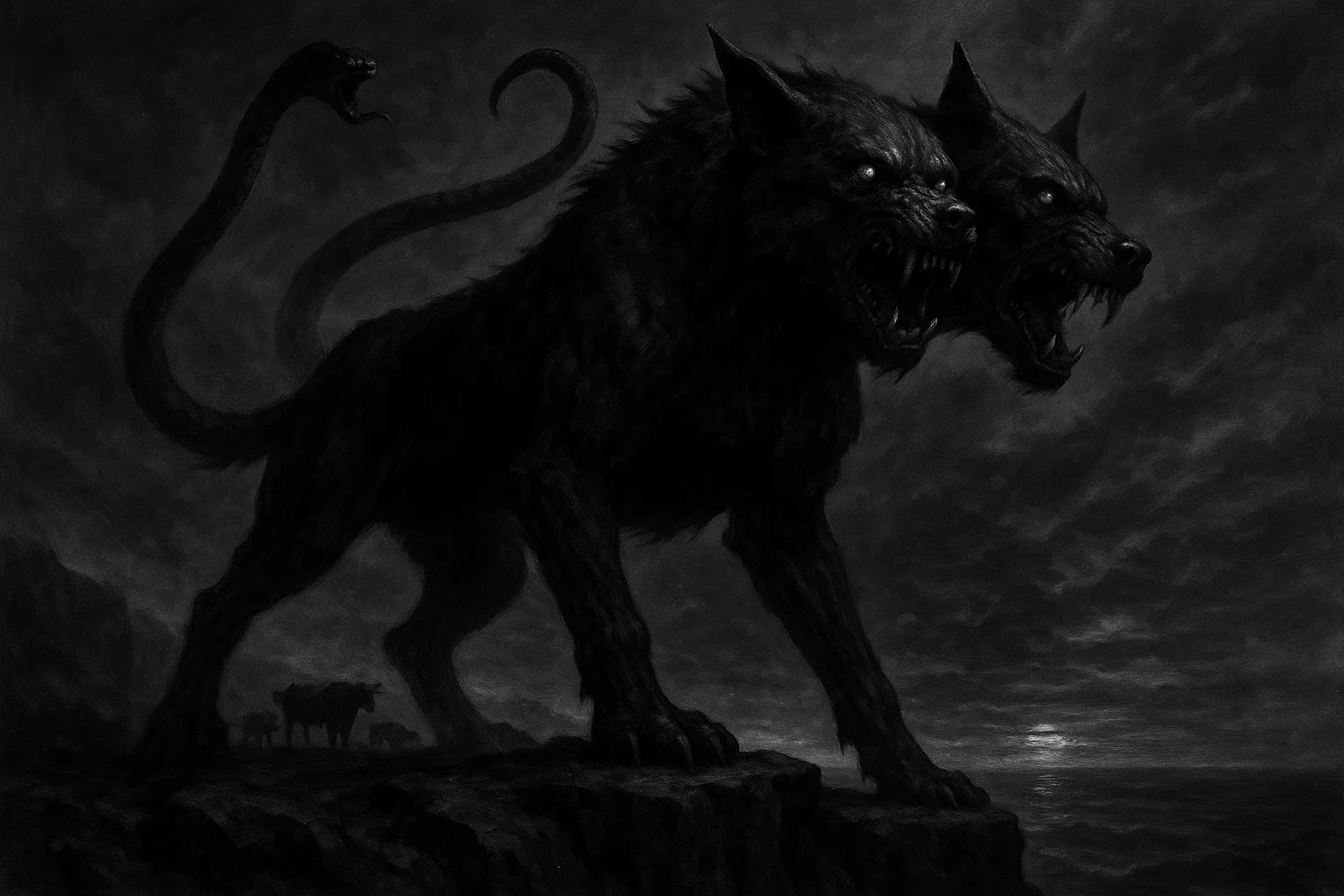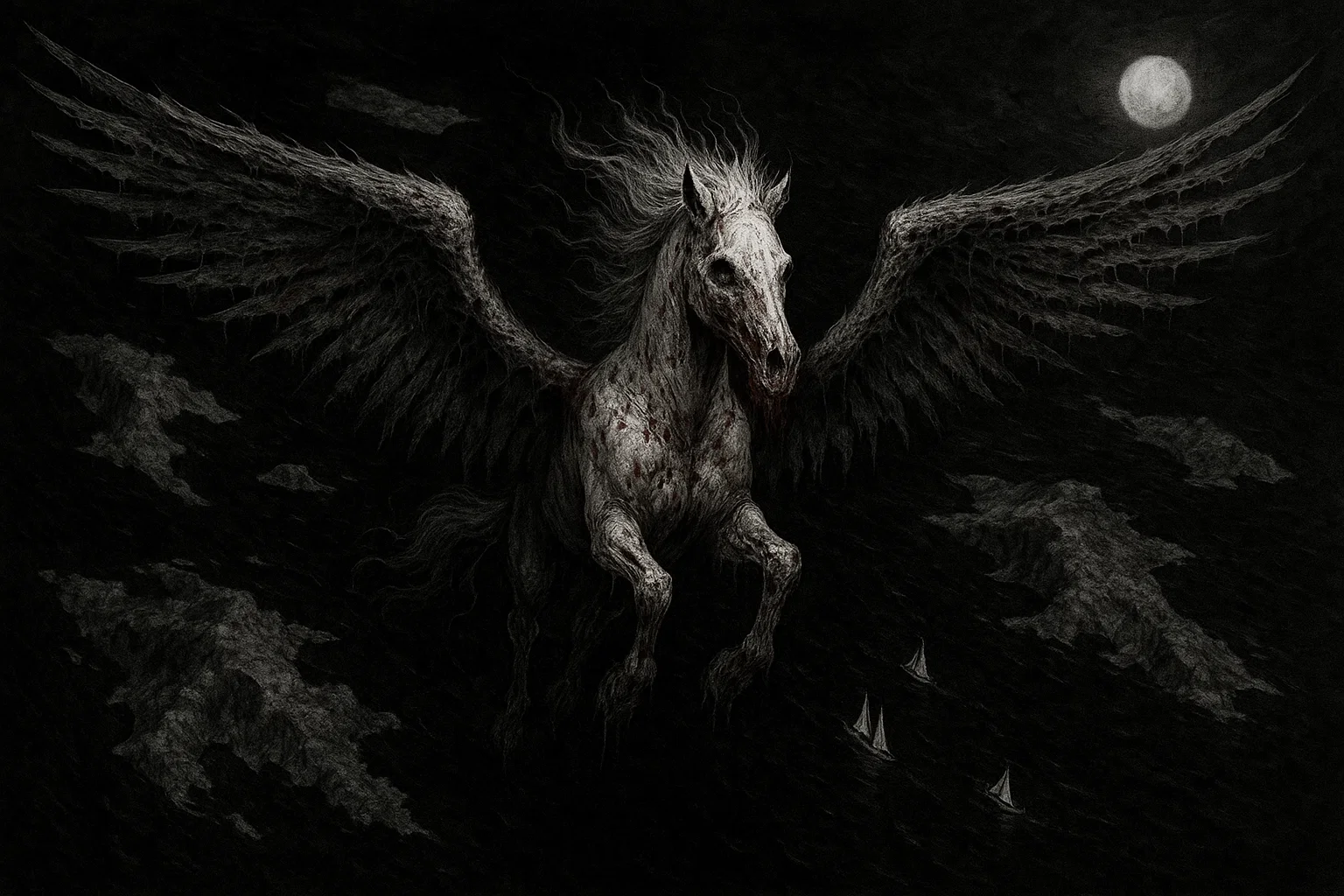In a realm where shadows whisper secrets, Ipos, the 22nd spirit of the Ars Goetia, emerges as a demon of profound insight. As an Earl and Prince of Hell, he commands 36 legions, wielding the power to unveil past, present, and future.
With a lion’s head and an angel’s form, Ipos transforms the timid into bold visionaries. His enigmatic presence, rooted in ancient myth, lures occultists seeking forbidden knowledge.
Summary
Key Information
This table summarizes Ipos’s attributes from demonological texts:
| Field | Information |
|---|---|
| Name | Ipos, Aiperos, Ayperos, Ayporos, Ipes, Ipess, Aypperos |
| Title | Earl, Prince, Mighty Prince, Count/Prince |
| Gender | Male |
| Role | Spirit of knowledge, wit, valor, death, divination, self-development, eloquence |
| Hierarchy | 22nd spirit in Ars Goetia; Earl and Prince, commanding 36 legions |
| Servitors | Lesser demons (names not specified in texts) |
| Superior Demon | Nebiros; possibly Lucifer or Satan in broader hierarchy |
| Powers | Knows past, present, future; makes men witty, bold, confident; reconciles friendships; reveals secrets; discovers treasures; influences decisions; induces laughter; rules death, divination, self-development; enhances eloquence |
| Appearance | Angel body, lion’s head, hare’s tail, goose’s feet; sometimes lion body or vulture; wears 1500s-1600s attire |
| Etymology | Possibly from Egyptian Anubis or Ipy; may derive from Latin ipes (lowly one) |
| Associated Figures | Anubis, Ipy (Egyptian deities); Guy Fawkes; possibly Thoth or Osiris |
| Weaknesses | Bound by sigil, proper rituals, or opposing angel Yeyayel |
| Opposing Angel/Saint | Yeyayel (22nd Shem HaMephorash angel) |
| Equipment/Tools | Sigil, dark blue candles, sandalwood, frankincense, copper items, personal artifacts |
| Pantheon | Goetic demons, Lesser Key of Solomon, Western occultism |
Etymology
The name Ipos lacks a definitive origin, adding to its mystique. Scholars suggest ties to the Egyptian god Anubis, the jackal-headed deity of death and mummification. Anubis’s role in guiding souls aligns with Ipos’s powers over death and divination.
Some link Ipos to Ipy, an Egyptian goddess depicted as a hippopotamus with leonine traits, symbolizing protection and fertility. Her hybrid form mirrors Ipos’s lion-headed, goose-footed appearance.
Another theory points to the Latin ipes or ipsis, meaning “lowly one” or “itself.” This could reflect Ipos’s role as a transformative force, elevating the humble to greatness.
In occult circles, Ipos is also associated with Thoth, the Egyptian god of wisdom, due to his knowledge-granting abilities. Less commonly, connections to the Canaanite god Baal-Hadad or the Mesopotamian Nergal, both linked to death and power, are proposed. These links remain speculative but highlight Ipos’s syncretic nature, blending Christian demonology with ancient mythologies.
The variation Aiperos may stem from Greek or Coptic roots, possibly meaning “one who pierces” or “revealer.” This aligns with Ipos’s ability to unveil truths.
The multiple spellings—Ayporos, Ipes, Aypperos—suggest scribal errors or regional adaptations in medieval grimoires. Each name variation emphasizes Ipos’s multifaceted identity as a demon of insight, transformation, and divine knowledge.
You May Also Like: Who Is Akesoli: The Pain-Bringer Demon of Amaimon’s Court?
What Does the Demon Ipos Look Like?
Ipos appears as a striking hybrid. His angelic body exudes celestial grace. A lion’s head symbolizes strength and royalty. A hare’s tail suggests agility and fertility. Goose feet imply adaptability across realms.
In some accounts, he takes a full lion’s form, radiating power. Rarely, he appears as a vulture, tying him to death and the afterlife.
His attire, often from the 1500s or 1600s, includes regal robes, reflecting his princely status. These traits make Ipos visually unforgettable, blending beauty with beastly ferocity.
Historical and Mythological Background
Ipos, the 22nd spirit of the Ars Goetia within the Lesser Key of Solomon, is a fascinating figure in demonology. His origins blend Christian demonological traditions with ancient mythologies, reinterpreted through medieval and Renaissance lenses.
Likely rooted in pre-Christian deities and archetypes, Ipos’s lore spans Egyptian, Mesopotamian, and Canaanite influences, as well as European folklore and modern media.
The Fallen Angel and the Assembly at Pandemonium
Before his demonic existence, Ipos was an angel, possibly a cherub or virtue, within the celestial hierarchy. Cherubs, known for their wisdom, and virtues, associated with divine miracles, align with Ipos’s powers of omniscience and transformation.
According to occult lore, Ipos joined Lucifer’s rebellion against the divine order during the War in Heaven, a cosmic conflict described in texts like the Book of Revelation. Cast out, he descended to Hell, becoming a demon in Pandemonium, the infernal capital.
In Pandemonium, Ipos attended Lucifer’s Rally, a pivotal gathering where fallen angels swore allegiance to their new emperor. Standing alongside peers like Astaroth, Beelzebub, and Asmodeus, Ipos’s knowledge shaped Hell’s strategies.
His ability to foresee outcomes likely made him a counselor, advising on battles against divine forces. This tale positions Ipos as a key architect of Hell’s early structure, his intellect vital to its governance.
Some traditions suggest he oversees a library or archive in Pandemonium, guarding esoteric texts that hold secrets of the cosmos.
The Guy Fawkes Conspiracy and the Spark of Rebellion
A compelling legend ties Ipos to Guy Fawkes, the infamous conspirator of the 1605 Gunpowder Plot. Fawkes, a Catholic zealot, aimed to destroy the English Parliament and kill King James I to restore Catholic rule.
Occult narratives claim Ipos appeared to Fawkes in a vision, cloaked in 17th-century garb, his lion’s head radiating authority. The demon fueled Fawkes’s courage, granting him the wit to plan the plot’s intricate details, from securing gunpowder to recruiting allies like Robert Catesby.
Though lacking historical evidence, this story portrays Ipos as a muse of rebellion. His influence, subtle yet potent, pushed Fawkes toward audacity, tempting him with visions of glory.
The plot’s failure—Fawkes was captured on November 5, 1605—may reflect Ipos’s dual nature: granting boldness but not guaranteeing success.
You May Also Like: Messages from Beyond | Horror Story
Anubis, Ipy, Thoth, and Osiris
Ipos’s strongest mythological tie is to Anubis, the Egyptian god of mummification and the afterlife. Anubis, with his jackal head, guided souls through the underworld, weighing hearts against the feather of Ma’at. Ipos’s lion-headed form and dominion over death and divination mirror Anubis’s attributes.
Occultists often view Ipos as a demonic reflection of Anubis, his lion head evoking the jackal’s predatory grace. Both entities reveal hidden truths, guiding mortals through spiritual transitions.
The Egyptian goddess Ipy (or Ipet), depicted as a hippopotamus with leonine and crocodilian features, offers another connection. Ipy, a protective deity of fertility, shares Ipos’s hybrid form and transformative powers.
Her role in safeguarding life parallels Ipos’s ability to foster growth, albeit through darker means. Similarly, Thoth, the ibis-headed god of wisdom, writing, and magic, aligns with Ipos’s knowledge-granting abilities. Thoth’s mastery of hieroglyphs and cosmic secrets echoes Ipos’s omniscience, suggesting a syncretic link.
Some traditions also associate Ipos with Osiris, the Egyptian god of death and resurrection. Osiris’s role in rebirth mirrors Ipos’s transformative gifts, turning the timid into the bold.
Nergal and Baal-Hadad
Beyond Egypt, Ipos shares traits with Nergal, the Mesopotamian god of war, plague, and death. Nergal, ruler of the underworld, wielded transformative power, much like Ipos’s ability to reshape personalities. Both figures command respect through fear, their authority tied to death’s inevitability.
Nergal’s lion imagery, common in Mesopotamian art, may have influenced Ipos’s leonine head, symbolizing dominion.
The Canaanite god Baal-Hadad, a storm deity, offers another parallel. Known for his commanding presence and battles against chaos, Baal-Hadad’s strength resonates with Ipos’s role as a Prince of Hell. His association with fertility and renewal aligns with Ipos’s transformative powers.
The Witch’s Familiar and the Pact of Knowledge
In medieval European folklore, Ipos served as a familiar to witches, appearing in rituals to grant forbidden knowledge. A 16th-century tale from France describes a witch named Margaux, who summoned Ipos to resolve a village feud.
Appearing as a lion-headed figure, Ipos whispered strategies to reconcile warring families, earning Margaux respect as a mediator. In return, she offered sandalwood and a lock of her hair, sealing a pact.
Another story from 1587 England recounts a sorcerer, John of York, invoking Ipos to find a hidden treasure. Ipos revealed a cache of coins buried under an oak, but the wealth brought John ruin, as greed consumed him.
The Scholar’s Temptation
A lesser-known legend from the Renaissance involves a German scholar, Heinrich Faustus, inspired by the Faust myth. Around 1520, Heinrich sought Ipos’s aid to master alchemy.
Ipos, appearing as a vulture, granted visions of alchemical formulas, promising eternal knowledge. Heinrich’s experiments succeeded, but his obsession led to madness, a cautionary tale of Ipos’s seductive power.
The Oracle of the Black Forest
In a 17th-century German legend, Ipos appeared as an oracle in the Black Forest. A group of occultists, seeking to predict a coming plague, summoned Ipos under a full moon. His lion-headed form emerged from a circle of blue candles, revealing the plague’s origin and cure.
The occultists saved their village but were shunned for dabbling in dark arts.
You May Also Like: Is the Black Prince’s Ruby Really Cursed?
Historical Mentions
This table details Ipos’s appearances in key demonological texts:
| Text/Grimoire | Year | Excerpt |
|---|---|---|
| Pseudomonarchia Daemonum | 1577 | “Ipes, alias Ayporos, is a great earle and a prince, appearing in the shape of an angell, but verie murdie: he knoweth things to come and past, he maketh a man wittie, and bold, and hath under his jurisdiction thirtie six legions.” |
| Ars Goetia | 17th century | “The Twenty-second Spirit is Ipos. He is an Earl, and a Mighty Prince, and appeareth in the form of an Angel with a Lion’s Head, and a Goose’s Foot, and Hare’s Tail. He knoweth all things Past, Present, and to Come. He maketh men witty and bold. He governeth 36 Legions of Spirits.” |
| Grand Grimoire | 18th century | Beneath him are the Goetic demons Ipos, Glasya Labolas, and Naberius. |
Ipos’ Powers and Abilities
Ipos wields unique powers that set him apart. His core ability is omniscience, knowing all things past, present, and future. He reveals secrets, from hidden treasures to personal truths, tempting seekers with forbidden knowledge.
Ipos transforms shy individuals into confident, witty, and bold leaders. He reconciles friendships, fostering harmony, a rare trait among demons. His influence over death and divination allows him to guide souls or predict fates, echoing Anubis.
In occult practices, Ipos enhances eloquence, making speeches persuasive. He induces laughter, lightening moods to manipulate emotions.
Unlike generic demonic powers like possession, Ipos focuses on intellectual and emotional transformation. In modern media, like Welcome to Demon School! Iruma-kun, he teaches tactics, suggesting strategic foresight.
These powers tempt humans with self-improvement but risk hubris or spiritual corruption, as engaging with demons is perilous.
Ipos’ Role in the Hierarchy of Hell
Ipos, the 22nd spirit of the Ars Goetia, holds dual titles: Earl and Prince. He commands 36 legions, a significant force, though smaller than Paimon’s 200 or Bael’s 66.
His domain is likely a knowledge-centric region of Hell, possibly near Pandemonium’s libraries or temples. The Grand Grimoire places him under Nebiros, Hell’s field marshal, who oversees necromancy and inspection.
Allies: Ipos likely collaborates with demons like Astaroth (knowledge) and Gusion (reconciliation), sharing similar powers. Adversaries: He may clash with Vassago, another truth-revealer, over influence.
Subordinates: His 36 legions include unnamed lesser demons, possibly spirits of divination.
Superiors: Beyond Nebiros, Ipos answers to Lucifer or Satan in the supreme hierarchy.
His role as a Prince suggests authority, but his Earl title indicates he also serves higher powers, balancing leadership with loyalty.
You May Also Like: The Real Annabelle Doll Story: Darker Than The Movies?
Astrological Associations and Symbolism
Ipos’s symbols and astrological ties reflect his transformative nature:
| Aspect | Association |
|---|---|
| Planet | Venus, Mercury (wisdom and communication) |
| Metal | Copper (Venus), quicksilver (Mercury) |
| Element | Air (intellect), Water (intuition) |
| Astrological Sign | Taurus (stability), Gemini (communication) |
| Day to Summon | Friday (Venus), Wednesday (Mercury) |
| Offerings | Sandalwood, frankincense, copper coins, personal artifacts, blue flowers |
| Animal | Hare, lion, goose, vulture |
| Color | Green (Venus), blue (water), gold (royalty) |
| Number | 22 (Goetic position), 7 (wisdom) |
| Precious Stones | Emerald, turquoise, lapis lazuli |
Ipos Sigil
The sigil of Ipos is a geometric design, featuring curved lines and angles within a circle. It acts as a spiritual anchor, ensuring safe summoning. Drawn on parchment or visualized, the sigil binds Ipos to the summoner’s will. Its intricate pattern reflects his complex nature, requiring precision to avoid ritual errors.
Comparison with Other Demons
| Demon | Rank | Appearance | Astrological Associations | Unique Traits |
|---|---|---|---|---|
| Agares | Duke | Old man riding a crocodile, holding a goshawk | Mars, Fire, Aries, Iron, Red | Commands loyalty through fear; specializes in mobilizing forces and disrupting authority, unlike Ipos’s focus on intellectual transformation. |
| Paimon | King | Effeminate man with a crown, riding a dromedary, accompanied by a noisy host | Sun, Fire, Leo, Gold, Yellow | Highly authoritative, with a vast entourage; contrasts with Ipos’s smaller, more focused legion and diplomatic skills. |
| Amon | Marquis | Wolf with a serpent’s tail, breathes fire, or a raven-headed man | Moon, Water, Cancer, Silver, Blue | Balances conflict and harmony, similar to Ipos’s reconciliation powers, but emphasizes emotional manipulation over wit. |
| Barbatos | Earl, Duke | Archer or musician in green, often with a horn | Venus, Air, Libra, Copper, Green | Shares Ipos’s treasure-revealing and reconciliation abilities but focuses on nature and music, less on personal transformation. |
| Buer | President | Lion head with five goat legs, or a centaur with a bow | Mercury, Air, Virgo, Quicksilver, Green | Focuses on healing and practical knowledge, contrasting with Ipos’s broader omniscience and bold-making powers. |
| Sitri | Prince | Leopard with griffin wings, transforms into a beautiful man | Venus, Water, Scorpio, Copper, Pink | Specializes in romantic and physical allure, differing from Ipos’s intellectual and spiritual transformation. |
| Vual | Duke | Dromedary, transforms into a man speaking imperfect Egyptian | Venus, Water, Taurus, Copper, Blue | Shares Ipos’s friendship-reconciling and truth-revealing powers but focuses more on romantic persuasion. |
| Zagan | King, President | Griffin-winged bull, shifts to a man | Saturn, Earth, Capricorn, Lead, Black | Shares Ipos’s wit-granting ability but excels in alchemical transformations, less focused on divination. |
| Gusion | Duke | Xenophilus (human-like figure, often scholarly) | Mercury, Air, Gemini, Quicksilver, Blue | Closely mirrors Ipos’s powers of divination and reconciliation, but emphasizes social elevation and dignity over boldness. |
Conclusion
Ipos, the 22nd spirit of the Ars Goetia, embodies knowledge and transformation. His powers to reveal truths and enhance eloquence make him unique. As an Earl and Prince, he commands 36 legions, serving under Nebiros and Lucifer. His ties to Anubis, Ipy, and other deities weave a rich mythological tapestry.
From medieval grimoires to modern anime, Ipos’s influence endures. His sigil, astrological links, and hybrid form captivate occultists and scholars.
Yet, his powers tempt with risks, as demonic engagement challenges moral boundaries. Ipos remains a symbol of hidden wisdom, inviting exploration into the mysteries of the infernal and divine.

